Paws & Pebbles: 10 Clever Ways to Design a Pet-Friendly Pea Gravel Yard
So you've got a furry friend who’s practically family — and you want your outdoor space to reflect that. Enter the pea gravel yard, the unsung hero of pet-friendly landscaping. It’s stylish, it drains well, and let’s be honest, it feels way better under paw than sharp rocks or hot concrete.
Why Pea Gravel is Purr-fect for Pets
Before we dive into the how-to, let’s talk about why pea gravel deserves its moment in the sun (or under the shade of your favorite patio umbrella). Unlike jagged river rocks or coarse limestone, pea gravel has smooth edges that are gentle on sensitive paws. It also compacts well without becoming solid like concrete, so your pup can do their business without tracking mud inside.
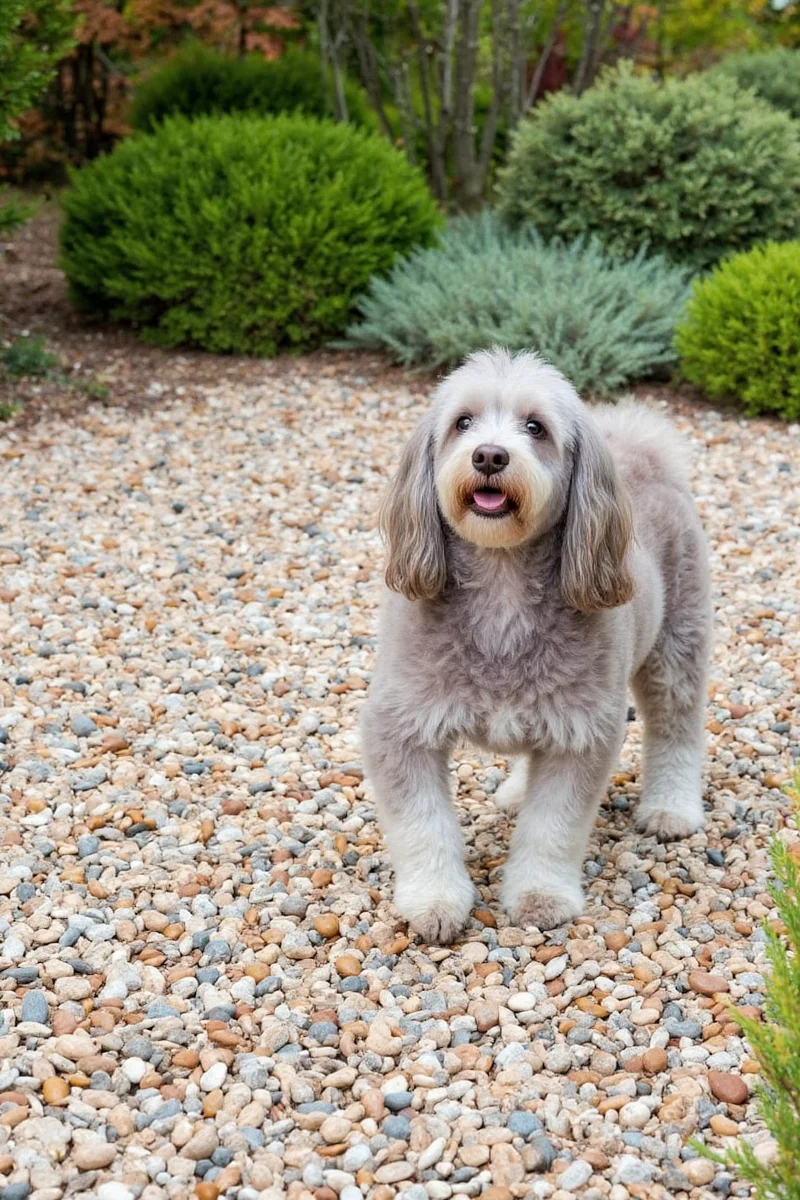
- Soft on paws
- Drains water quickly
- Easy to clean and maintain
- Looks stylish with minimal effort
Designing Your Pet-Integrated Pea Gravel Yard
The goal here is simple: create a space that’s as functional for your four-legged friends as it is beautiful for you. Here’s how to strike that perfect balance:
1. Create Separate Zones
If you’ve ever tried to host a BBQ while Fido does his business in full view, you’ll appreciate zoning. Think of it like a “room” layout but outside. Use low hedges, decorative fencing, or even a raised garden bed to divide the yard into play zones, relaxation areas, and yes… the all-important bathroom corner.
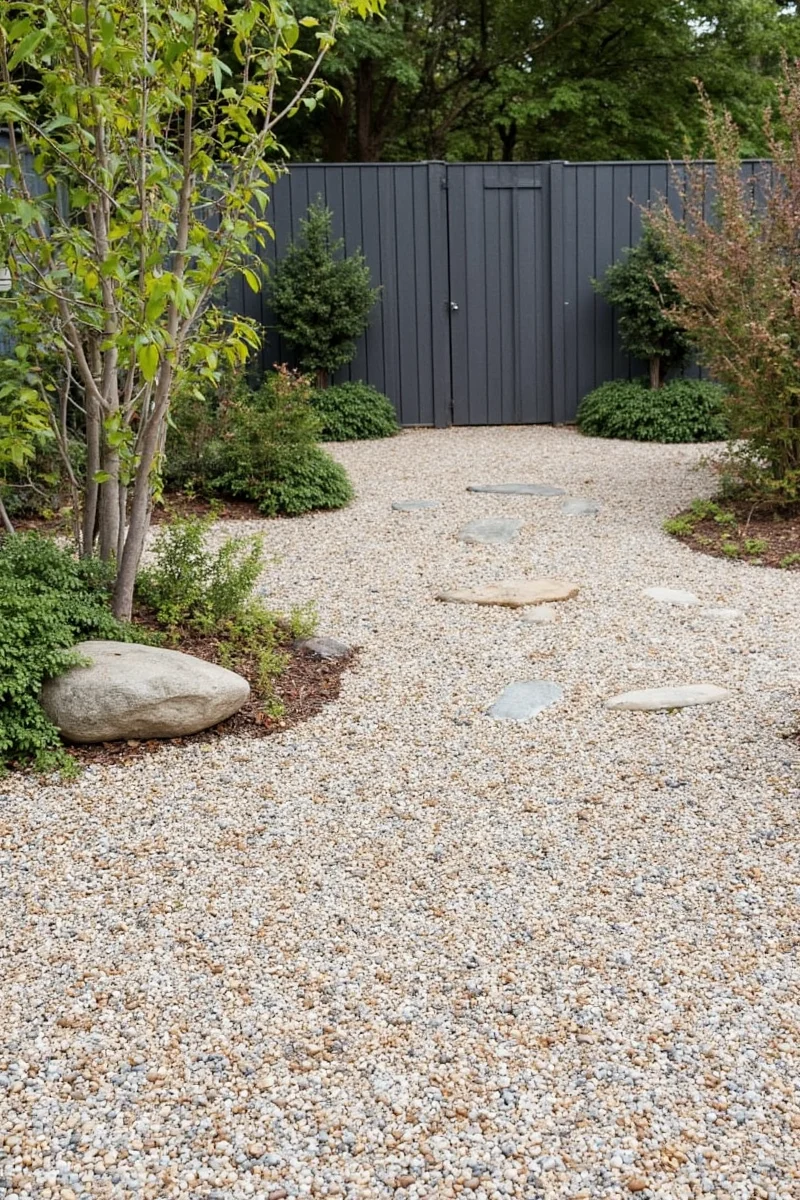
2. Go Big on Pathways
Dogs love routines — especially when it comes to potty time. Laying out clear pea gravel pathways makes it easier for them to know where to go and helps protect your grassy patches (if you still have any!). Plus, pea gravel paths add structure and elegance to your landscape without the high maintenance of stepping stones.
3. Add Shade for Sensitive Snouts
Not all pets tolerate heat the same way. Breeds like bulldogs, pugs, and Persian cats get overheated fast. Adding shaded areas with pergolas, umbrellas, or natural plant cover ensures they can enjoy the outdoors safely.
4. Invest in Edging That Stays Put
Pea gravel shifts over time — especially if you’ve got playful pups running around. Use durable edging materials like steel, plastic, or stone to keep the gravel contained and your borders crisp.
| Edging Material | Pros | Cons |
|---|---|---|
| Steel | Durable, long-lasting, clean look | Higher cost, harder to install |
| Plastic | Cheap, easy to install | May warp or fade over time |
| Stone | Natural look, very sturdy | Labor-intensive installation |
Product Spotlight: Top Picks for a Pet-Safe Pea Gravel Yard
Ready to shop? We’ve rounded up some must-have products that make your pea gravel yard safer, cleaner, and more fun for your pets.
1. Petco’s Self-Cleaning Poop Scooper

- Material: Stainless steel frame with rubber grip
- Mesh size: Fine enough to sift pea gravel without losing small stones
- Ergonomic design: Reduces back strain
- Best For: daily cleanup in medium to large yards
2. TurfLogic Pet Odor Neutralizer
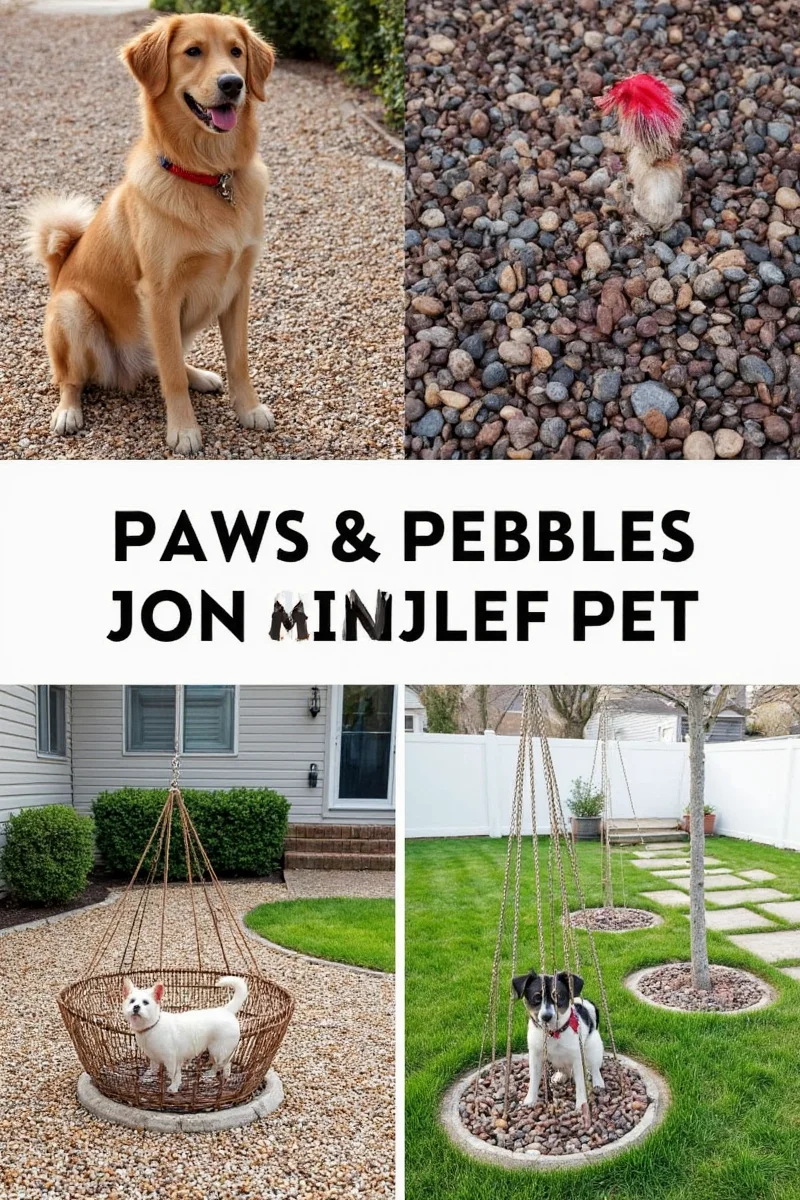
- Biodegradable formula
- No harsh chemicals
- Safe for kids, pets, and plants
- Great for: controlling pee smells in high-traffic spots
3. Gorilla Outdoor Rug
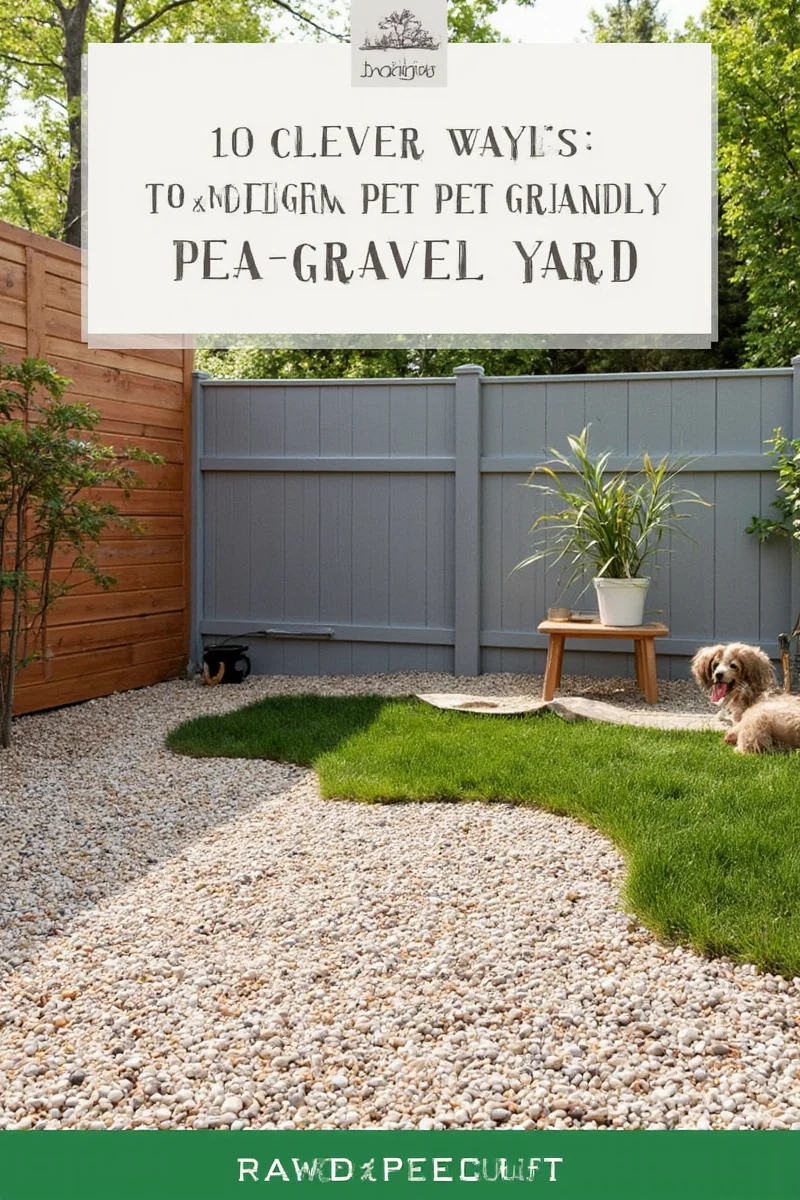
- UV-resistant fibers
- Non-slip backing
- Easy to hose off
- Ideal for: entryways and feeding stations
4. FlexiGate Expandable Pet Gate
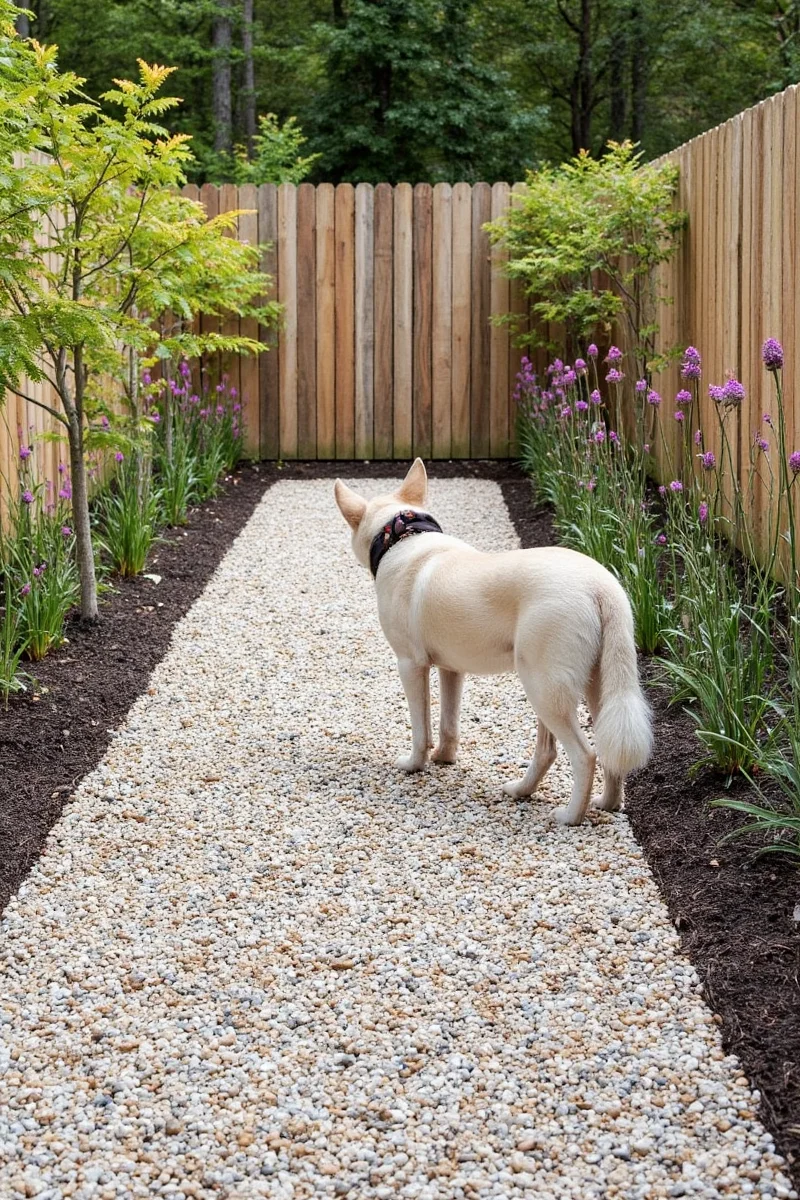
- Adjustable width: fits openings from 28–52 inches
- Metal construction: weatherproof and chew-proof
- Perfect for: separating zones without visual clutter
Pro Tips for Maintaining Your Pet-Friendly Pea Gravel Yard
You did the hard part — now keep your pea gravel looking fresh with these expert-approved tricks.
- Rake weekly to redistribute gravel and break up compacted areas.
- Hose down high-traffic zones once a week to reduce odor buildup.
- Add a wash station with a foot-operated faucet or portable pet shower.
- Replenish gravel every 6–12 months depending on wear and tear.
- Train pets early on designated bathroom zones to prevent uneven wear patterns.
Bonus: Creative Play Ideas Using Pea Gravel
Who says pea gravel is just for looks? Get creative with your setup!
- DIY Agility Course: Use pea gravel lanes to guide your dog through jumps and weave poles.
- Scent Training Games: Hide treats in different gravel zones for mental stimulation.
- Kitty Zen Garden: Build a mini zen garden using pea gravel and smooth stones — perfect for curious felines to dig and nap.
Conclusion: The Pea Gravel Yard Is More Than Just a Trend
Creating a pet-integrated pea gravel yard is more than just an aesthetic choice — it’s a lifestyle upgrade for both you and your pet. Whether you’re redesigning your backyard for the first time or upgrading your current space, pea gravel offers a perfect blend of practicality and charm.
With the right planning, products, and maintenance routine, your yard can become a safe, stylish haven where your pet thrives — and where you actually enjoy spending time together.
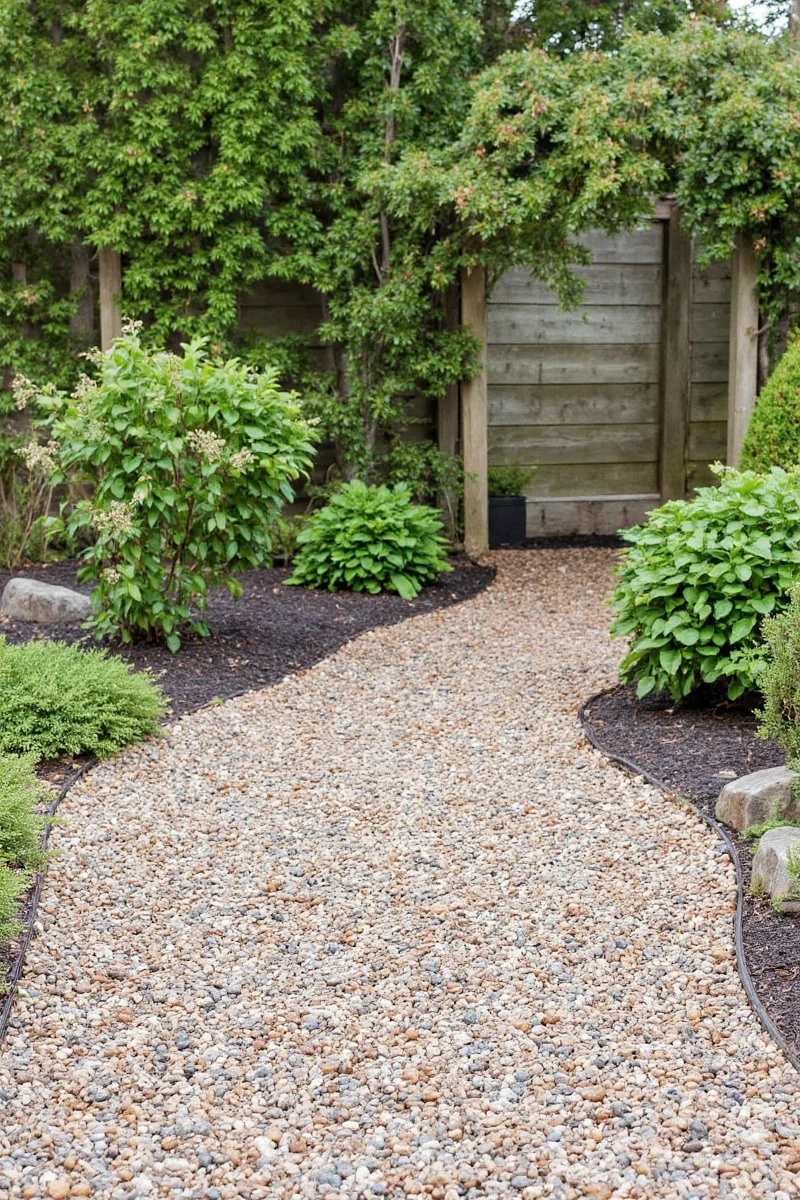
Now go forth and gravelify your world — one paw print at a time.

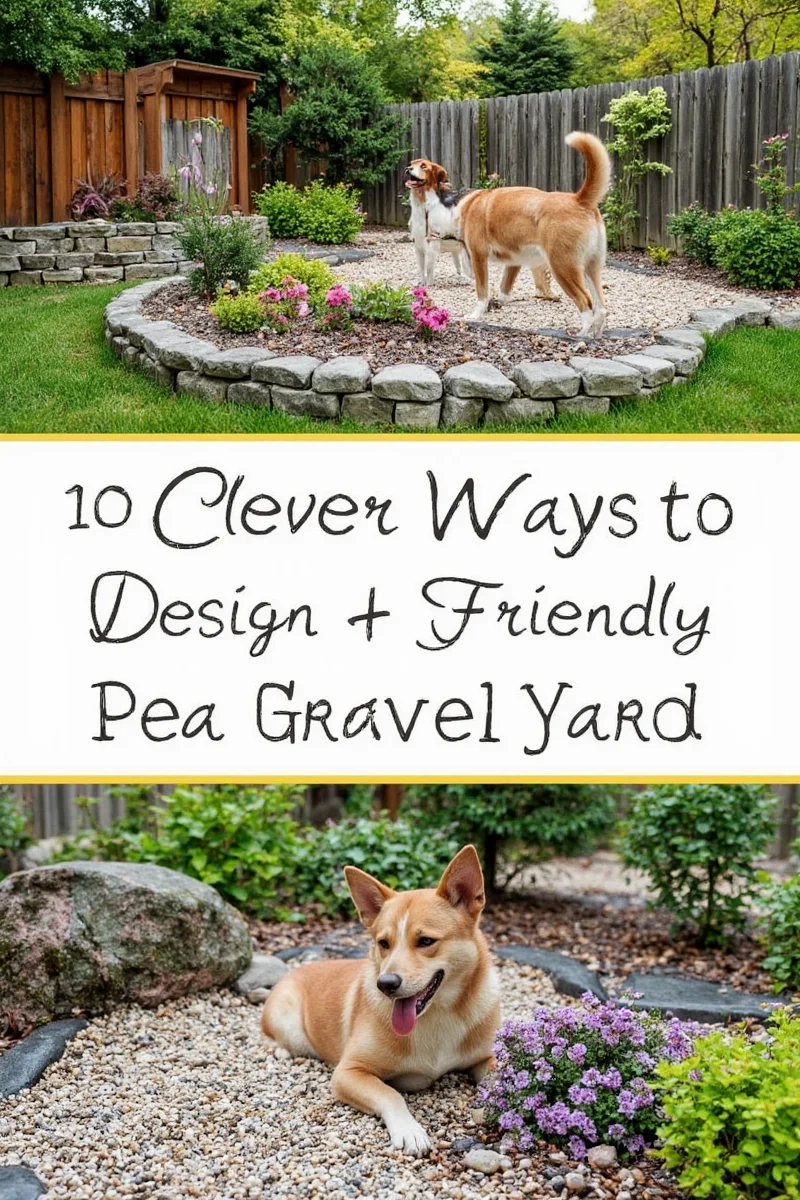









 浙公网安备
33010002000092号
浙公网安备
33010002000092号 浙B2-20120091-4
浙B2-20120091-4